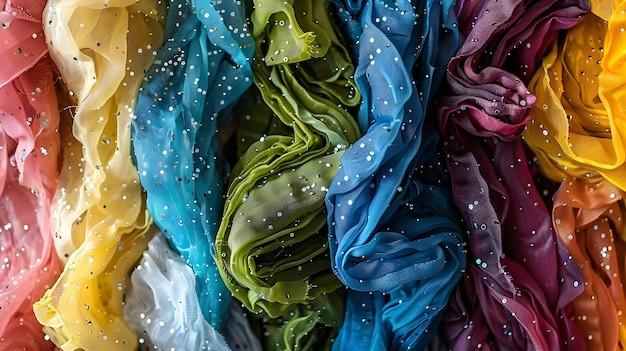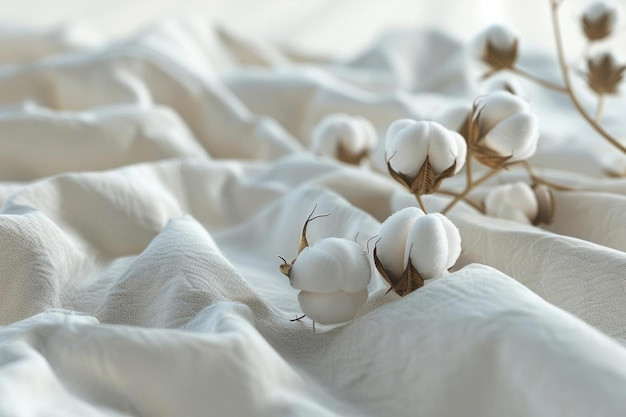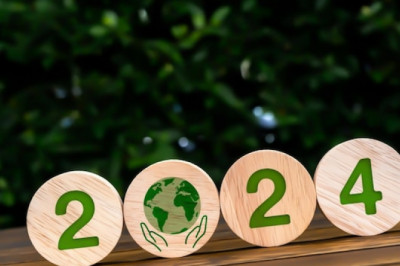As the fashion industry moves towards sustainability, 2024 has seen a surge in eco-friendly and innovative materials that are not only kind to the planet but also offer new textures, durability, and aesthetics. These materials are revolutionizing the way we think about fashion, from reducing water usage and carbon footprints to repurposing waste into wearable art. Let's explore eight groundbreaking materials that are setting the trend for sustainable fashion in 2024.
Mycelium Leather
Mycelium leather, derived from the root structure of mushrooms, has emerged as a leading eco-friendly alternative to animal leather. This material is grown in controlled environments, significantly reducing the need for land and resources typically associated with traditional leather production. Mycelium leather is not only biodegradable but can also be engineered to mimic various textures and colors, offering designers a versatile and sustainable option. Its production process emits fewer greenhouse gases and uses minimal water, making it a favorite among environmentally conscious brands looking to reduce their ecological footprint in 2024.
Recycled Ocean Plastic Fabric
In an effort to tackle the growing issue of ocean pollution, recycled ocean plastic fabric turns waste into wearable treasures. Companies collect discarded plastic items from the sea, such as bottles and fishing nets, and transform them into high-quality yarns and fabrics. This innovative material not only helps clean our oceans but also reduces the reliance on virgin plastics. The resulting textiles are durable, versatile, and suitable for everything from casual wear to high-end fashion, making it a popular choice for brands committed to sustainability in 2024.
Lab-grown Cotton
Lab-grown cotton represents a breakthrough in sustainable textile production, offering a viable solution to the water-intensive cultivation of traditional cotton. By growing cotton cells in a lab environment, this method drastically reduces the need for water, pesticides, and arable land. Lab-grown cotton has the potential to match or even surpass the quality of its natural counterpart, providing a soft, durable, and eco-friendly fabric choice. As of 2024, it's gaining traction among brands looking to minimize their environmental impact without compromising on quality or comfort.
Nettle Fiber
Nettle fiber is making a comeback as a sustainable textile option. Once used in ancient civilizations, nettles offer a low-impact alternative to synthetic fibers and conventionally grown cotton. Nettle plants require minimal water, no pesticides, and enrich the soil they grow in. The fibers harvested from nettles are strong, naturally antibacterial, and have excellent moisture-wicking properties, making them ideal for outdoor and performance wear. In 2024, nettle fiber is celebrated for its environmental benefits and its contribution to biodiversity and soil health.
Piñatex
Piñatex is a natural and sustainable textile made from pineapple leaf fibers, a byproduct of the pineapple harvest. This innovative material provides an ethical and eco-friendly alternative to leather, utilizing waste from the pineapple industry. Piñatex is not only biodegradable but also requires significantly less water and land compared to traditional leather production. Its versatility allows it to be used in a wide range of products, from shoes and bags to upholstery. As of 2024, Piñatex continues to gain popularity for its role in promoting circular fashion.
Hemp Fabric
Hemp fabric is known for its durability, breathability, and mildew resistance, making it an excellent choice for eco-conscious consumers. Hemp cultivation is remarkably sustainable, requiring little to no pesticides, less water than cotton, and offers a high yield per acre. The fibers from the hemp plant can be used to create a variety of textures, from linen-like to silky smooth. In 2024, hemp fabric is increasingly favored for both its environmental benefits and its versatility in fashion design.
Coffee Ground Fiber
Coffee ground fiber is a testament to the innovative recycling of food waste into sustainable fashion materials. Used coffee grounds are collected from cafes and restaurants, then processed into yarn that is woven into fabric. This material is fast-drying, UV resistant, and naturally deodorizing, making it perfect for active and outdoor wear. The process of turning coffee grounds into fabric also significantly reduces waste and the carbon footprint associated with traditional textile production. In 2024, coffee ground fiber is celebrated for its unique approach to sustainability and functionality.
Seaweed Fiber
Seaweed fiber, derived from marine algae, offers a wealth of benefits for both the environment and the wearer. It is fully biodegradable, renewable, and its cultivation does not require fertilizers, freshwater, or land. Seaweed fiber is rich in vitamins and amino acids, which can be beneficial to the skin. Additionally, it is soft, breathable, and has natural antibacterial properties, making it an ideal material for sensitive skin. In 2024, seaweed fiber is gaining attention for its health benefits and minimal environmental impact, marking it as a material of the future in sustainable fashion.
















Comments
0 comment